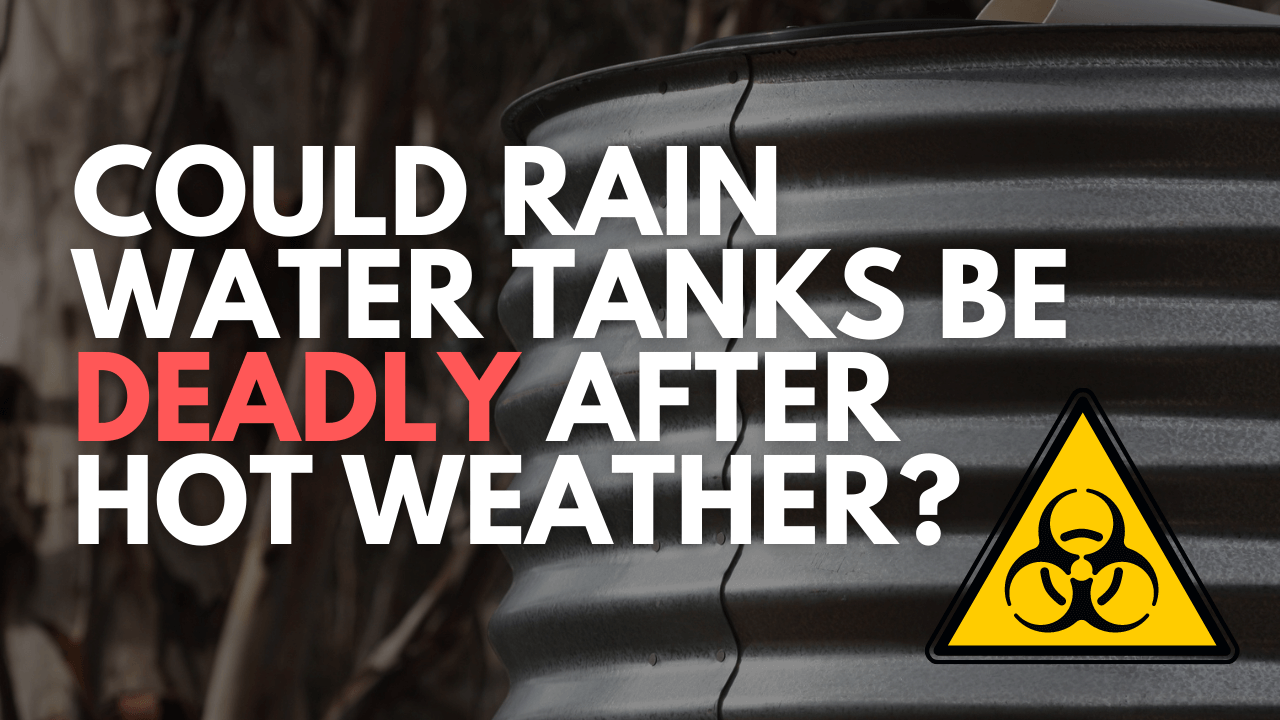Could Rain Water Tanks Be Deadly After Hot Weather?
It has been said that rain water tanks that get too hot during the warmer months could be a host to billions of deadly bacteria waiting to play havoc in the body.
Many people believe that boiling water from a lake, dam, or rain water tank is enough to make the water safe to drink, but nothing could be further from the truth.
A rain water tank testing project was run in the western Riverina area, where 17 water screening tests were carried out on rainwater tanks.
The results showed that 60% of the water tanks tested positive for bacteria containing viral organisms which have a high potential for waterborne sickness.

Health Risks of Bacteria And Viruses In Rain Water Tanks
Rainwater can be contaminated by birds, small animals and debris collected on your roof. Rain Water Tanks are also an abundant breeding ground for bacteria such as E. coli and Salmonella.
Australian Drinking Water guidelines suggest taking extra care when collecting rainwater for drinking because it could likely contain harmful contaminants. That's why filtration is an important step in turning God's gift of rain into delicious tasting drinking water that heals the body instead of harming it.
In tropical parts of Australia, other harmful contaminants such as legionella are more common, which can quite possibly end up being a case of legionnaires disease.
Legionnaires disease is a serious type of lung infection that can be caused by small droplets of water that are inhaled or swallowed, which introduce legionella into the lungs.
Nobody wants to be dealing with that, especially with everything else going on in the world at the moment.
While viruses are common and most people clear water-borne bacteria with a case of the runs, not everybody is that lucky.

What’s So Deadly About Rain Water Tanks In the Heat?
In rural areas, organisms like Naegleria fowleri are thriving in temperatures anywhere between 23 degrees and 40 degrees.
While it’s very rare, the amoeba Naegleria fowleri can cause death so it’s not something you want to risk if you plan on sticking around.
Common Contaminants Found In All Water Tanks
According to the CDC, contaminants such as dust, smoke and particles from the air quite easily enter rainwater before it even lands on your roof.
After that, there is a high risk for asbestos, lead and copper which comes from roofing materials, gutters, piping and storage materials.
Lead flashings are a significant risk for rainwater tank contamination.
You don’t want lead in your drinking water. Lead poisoning symptoms include headache, abdominal pain, weakness and tingling in the extremities.
Many investigations have been carried out, and in Melbourne, it’s quite common to have rainwater tanks that are contaminated with lead and other heavy metals that exceed drinking water guidelines by 50 times or more.

How To Protect Your Family When Using A Rain Water Tank In The Heat
Protecting yourself against heavy metal toxicity, viruses, bacteria and all other Contaminants Found in Rain Water Tanks, whether it’s hot or not, is very simple.
Simply get a 20” x 4.5” Big Blue Rain Water Tank Filter.
It will stop most bugs, debris and sediment. Once you’ve stopped the bugs, you’ll need to treat all the bacteria, especially if your tank or gutters are full of debris and dirt.
Flush Your Tank With Hydrosil
If you are just wanting to get rid of bacteria every now and then, you can apply a dose of Hydrosil to your Rain Water Tank, but it's not practical or affordable to do this as a regular practice.
Many homes around Australia are fitted with Rain Water Tank Filters and UV sterilization.
As a precaution, we also recommend having an Aragon Water Filter under the kitchen sink for your drinking water in the off chance your power goes out.
You can also install a pH elevation vessel to raise the pH of your rainwater to avoid stripping the pipes and leaving more metals in your water after you’ve already filtered it.
Learn More About How You Can Protect Your Family From Rain Water Tank Contamination
While we have covered the basics already, there are a few more important things you need to know about rain water filtration to protect your family’s health from all the risks above for many years to come.
We go into further details about the risks and what you can do in the blog, so feel free to continue reading and contact us if you have any questions.
We’d love to hear from you.








